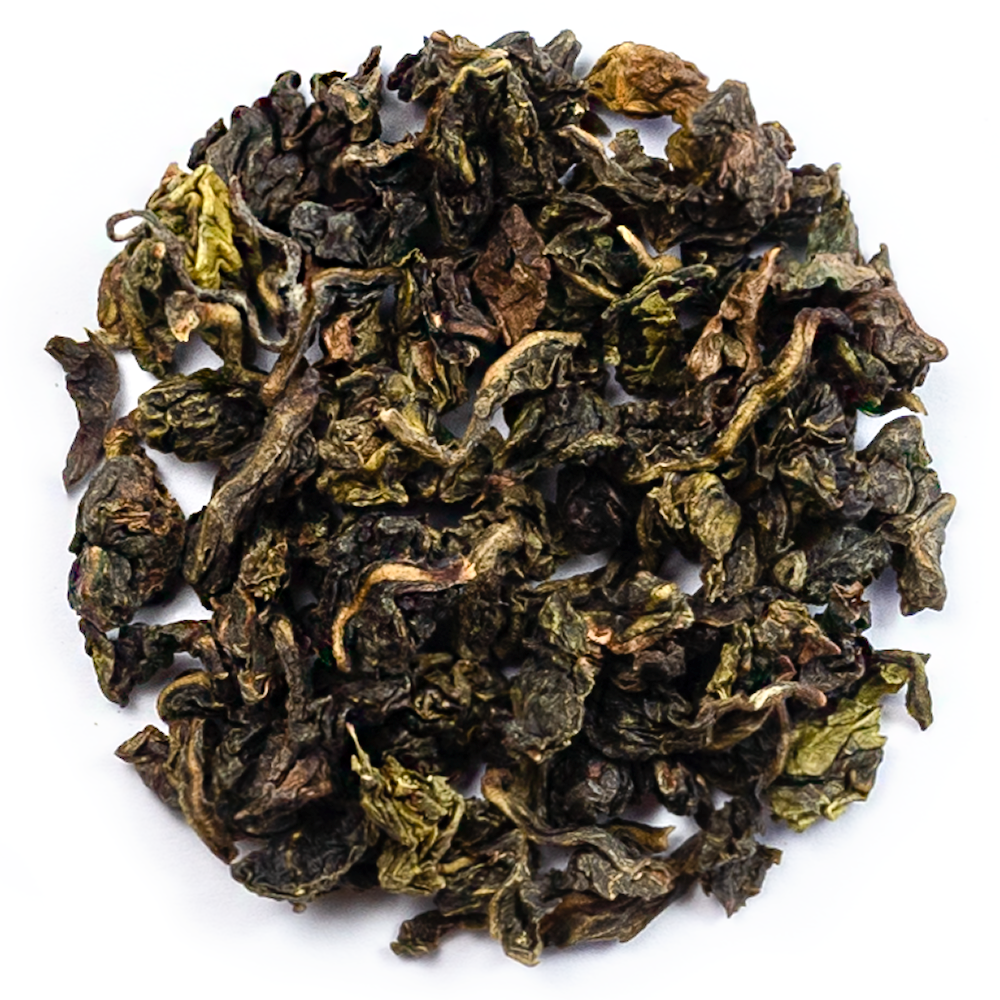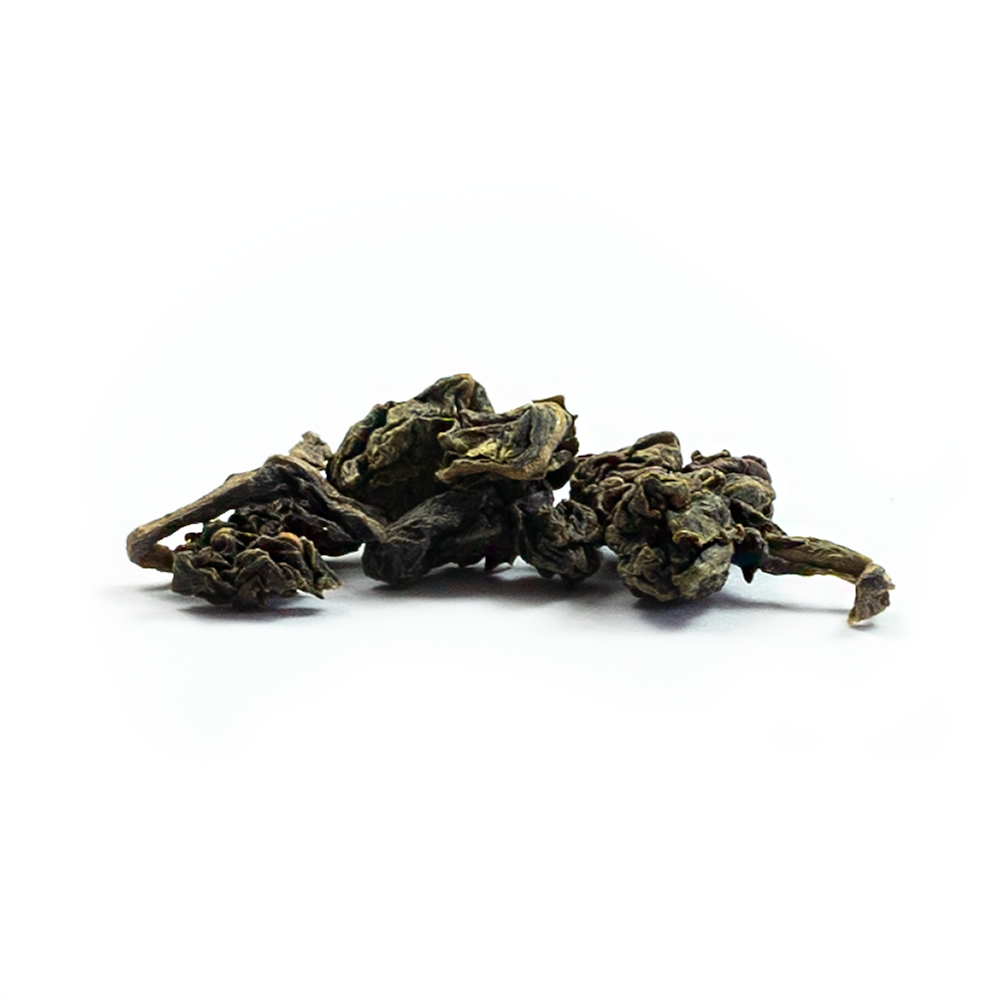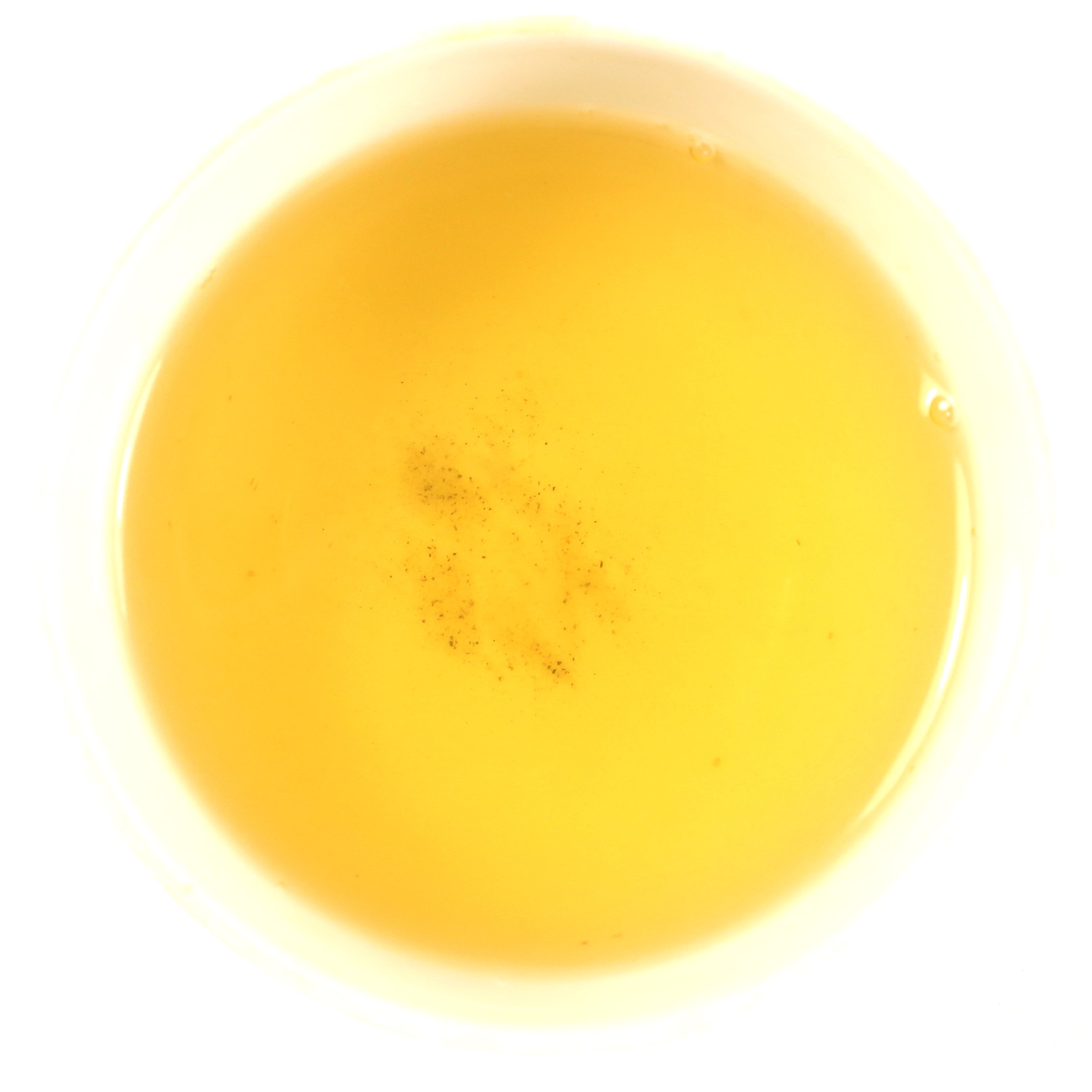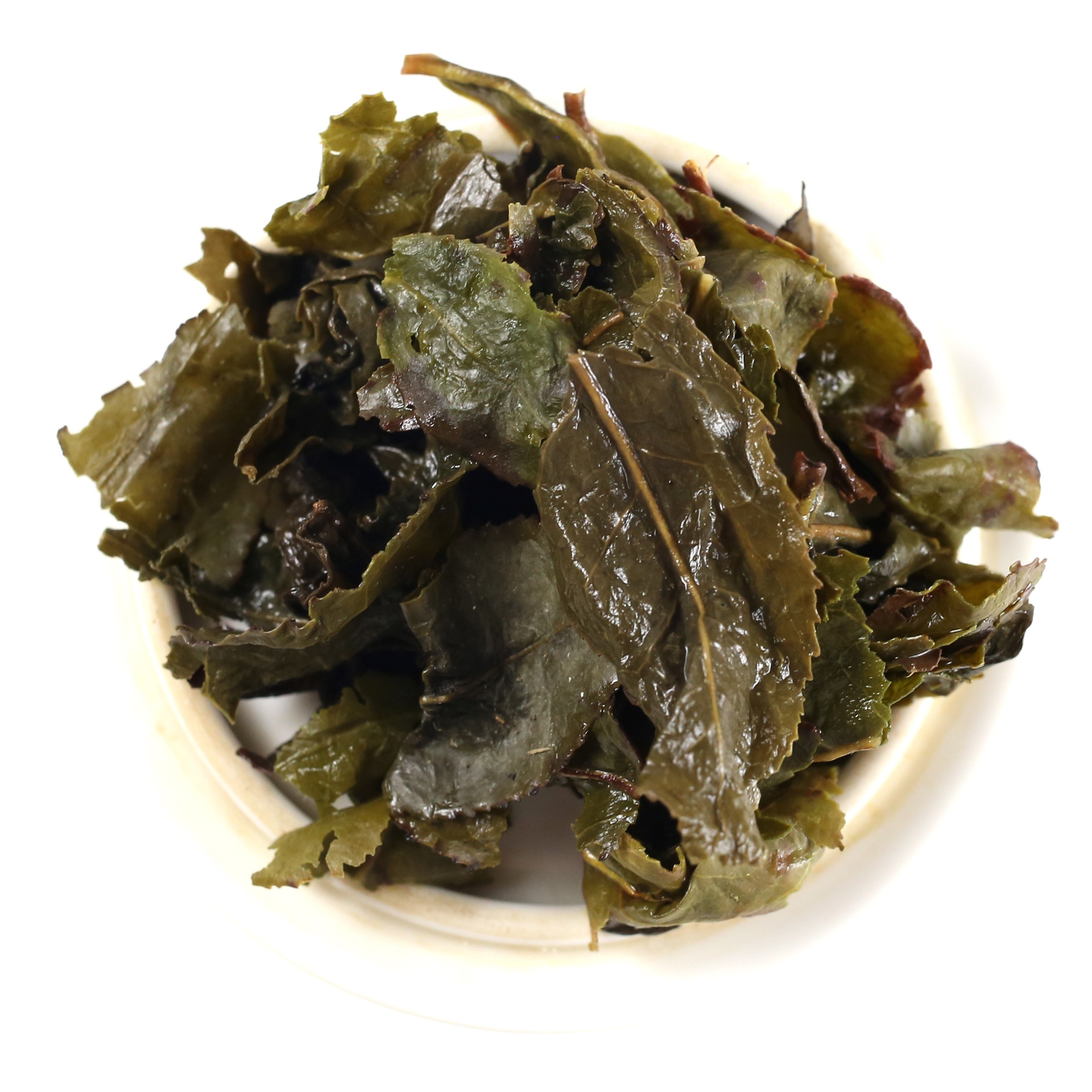Oolong Brewing Guide

1 Teaspoon
Add 1 teaspoon per person and one for the pot.

80⁰c - 90⁰c
Boil using fresh water, at a temperature of 80⁰c - 90⁰c.

2 - 3 Mins
Steep for 2 - 3 minutes, depending on personal preference.
About Product
-
Product Description
Translated to broadly mean ‘colourful variety’, Se Chung Oolong Tea originates from the Anxi county of the Fujian Province, China. It is created using a shorter fermentation period compared with other Oolong Teas from the province, offering a slight herbaceous green character.
Although not as well known as other Oolong Teas such as Ti Kuan Yin, Se Chung (also known as ‘Se Zhong’) is especially popular in Hong Kong’s Chinese restaurants.
In fact, Oolong, as a whole, have been often dubbed as ‘Chinese Restaurant Teas’, accounting for their high demand in such establishments across the country! Se Chung is no exception, but is equally delicious from the comfort of your own home on a cold, rainy day!
There is a reason Oolong Tea is often described as a beverage ‘in-between’ Green Tea and Black Teas! When produced, Oolong Tea is slightly fermented and semi-oxidised, meaning it is quite literally reminiscent of flavours of both Black and Green Teas. The processing method involved in its creation is particularly intricate, and involves extreme care and precision.
First, the tea must be withered, which sees the leaves left out in direct sunlight. This is followed by what is known as the ‘bruising stage’ of processing. Traditionally, this step would have been done by hand, as workers shook their withered leaves in wicker baskets. Today, however, this step is more commonly done by specially designed machines.
Bruising is twofold; not only does it ensure the flavours are full and distinct, but also allows the leaves to begin oxidising. Next, another course of withering is carried out – this time indoors – with these early stages often repeated a number of times, depending on the desired result. Once this has occurred, a stage known as ‘Fixing / Kill-Green’, sees the tea leaves treated with heat to halt oxidation. The leaves are then rolled into long curl or small pearl shapes before being dried and roasted further.
Finally, you have the finished product, all ready for consumption! Se Chung Oolong is just one of many different categories of Oolong Tea. These different varieties range in oxidation levels from as low as 5% to as high as 90%!
The history of Oolong Tea is shrouded in great mystery! While many stories have been circulated, some dating from as early as the 10th Century, others as late as the 17th Century, there is no definitive answer as to how it came to be.
The oldest theory originates from the Song Dynasty (906 – 1279 C.E), when Chinese Emperors were presented with ‘tribute teas’. Oolong Tea was supposedly first produced in the Beiyuan Garden of the Fujian Province, and was originally known by the name, ‘Wu Long’ (or, ‘Black Dragon Tea’). Through ‘Chinese Whispers’, ‘Wu Long’ eventually became ‘Oolong’, and so a new tea was born (allegedly!).
About Se Chung Oolong Tea
Type of Tea: Loose Leaf Oolong Tea.
Origin: The Anxi County, Fujian Province, China.
Brewing Instructions: Use freshly boiled water left to cool to temperatures between 80 and 90 degrees. Following this, infuse for 2 to 3 minutes.
How to Serve: Here at the Kent and Sussex Tea and Coffee Company, we recommend that you serve this beverage without any accompaniments. However, you may wish to add honey or lemon, depending on your personal tastes.
Tasting Notes: This floral delight is reminiscent of long, leisurely walks through countryside meadows. Delicate and smooth with every sip, Se Chung Oolong Tea has slight grassy undertones. It also offers a refreshing aftertaste long after you have drained your cup.
Colour in Cup: Pale golden-green liquor, light in tone.
Benefits of Oolong Tea: Part of the reason this beverage is so popular in Chinese Restaurants is due to its incredible ability to cleanse the digestive system. For those who are not sensitive to caffeine, the consumption of Se Chung Oolong Tea, as well as all other Oolong Teas, can help alkalise the digestive tract. It works towards reducing inflammation in those with acid reflux and ulcer issues, in particular. Further to this, the frequent consumption of this tea, when consumed as part of a healthy and active lifestyle, can help you to boost your metabolism! This in turn, can help with weight management. -
Delivery Information
We offer reliable delivery services through Royal Mail to ensure that your orders reach you on time.
Here are the main points you should be aware of:
- Standard UK Delivery: £3.95 excluding delivery charge.
- Delivery Times: Orders are processed and dispatched within 2-5 working days but they may take longer during busy times. It is worth noting that all our orders are packed by hand in order to maintain the quality.
- Free Delivery: We are delighted to provide free shipping for UK orders over £35*. Moreover, customers from Europe can enjoy free shipping for any purchase above €75*. Furthermore, we offer free delivery in the USA for all purchases exceeding $125*. Please note terms and conditions may apply.
- Tracking: When your package is sent you will receive a tracking number via email so as to keep tabs of its progress.
International Shipping
We do ship worldwide meaning our products can be accessed by anyone around the world.
Here are some important details:
- Delivery Times: International deliveries vary based on destination, generally taking between 7-14 working days.
- Shipping Costs: International shipping costs are calculated at checkout based on your location and weight of your order. View full delivery charges for your location.
- Customs and Import Duties: Remember customs or import duties may exist depending on regulations in your country; these charges are borne by the customer.
Returns Policy
Your satisfaction is our top priority, however if for any reasons you’re not completely happy with your purchase, simply follow our returns procedure:
- Eligibility: Items returned within 30 days of receipt must remain unopened and in their original condition.
- Process: In order to return an item contact our customer service department using your unique order number after which detailed instructions will be given concerning returning them back to us securely.
- Refunds: Our aim is to refund you within 5-7 working days upon successful reception of returned goods. The refund amount will be credited to your original payment method.
For any other Enquiries or help please contact our Customer Support Team always at your service.
-
Product Reviews

 Loose Leaf Tea
Loose Leaf Tea Pyramids
Pyramids Tea Bags
Tea Bags Africa
Africa Assam
Assam Ceylon
Ceylon Chinese
Chinese Darjeeling
Darjeeling European
European Indian
Indian Japan
Japan Nepal
Nepal South East Asia
South East Asia Ayurveda Tea
Ayurveda Tea Black Tea
Black Tea Chai Tea
Chai Tea Flowering Tea
Flowering Tea Fruit Tisanes
Fruit Tisanes Green Tea
Green Tea Herbal Tea
Herbal Tea Matcha Tea
Matcha Tea Oolong Tea
Oolong Tea Organic Tea
Organic Tea Pu erh Tea
Pu erh Tea Rooibos Tea
Rooibos Tea White Tea
White Tea Asian Coffee
Asian Coffee Caribbean Coffee
Caribbean Coffee Central American Coffee
Central American Coffee South American Coffee
South American Coffee Coffee Blends
Coffee Blends Decaffeinated Coffee
Decaffeinated Coffee Espresso Coffee
Espresso Coffee Ethically Sourced Coffee
Ethically Sourced Coffee Flavoured Coffee
Flavoured Coffee Organic Coffee
Organic Coffee Single Origin Coffee
Single Origin Coffee Chocolate 1
Chocolate 1 Chocolate 2
Chocolate 2 Chocolate 3
Chocolate 3 Chocolate 4
Chocolate 4 Chocolate 5
Chocolate 5 Chocolate 6
Chocolate 6 Chocolate 7
Chocolate 7 Chocolate 8
Chocolate 8 Chocolate 9
Chocolate 9 Loose Tea Filters
Loose Tea Filters Tea Accessories
Tea Accessories Tea Bricks
Tea Bricks Tea Caddies
Tea Caddies Tea Caddy Spoons
Tea Caddy Spoons Tea Gift Ideas
Tea Gift Ideas Tea Infusers
Tea Infusers Tea Strainers
Tea Strainers





